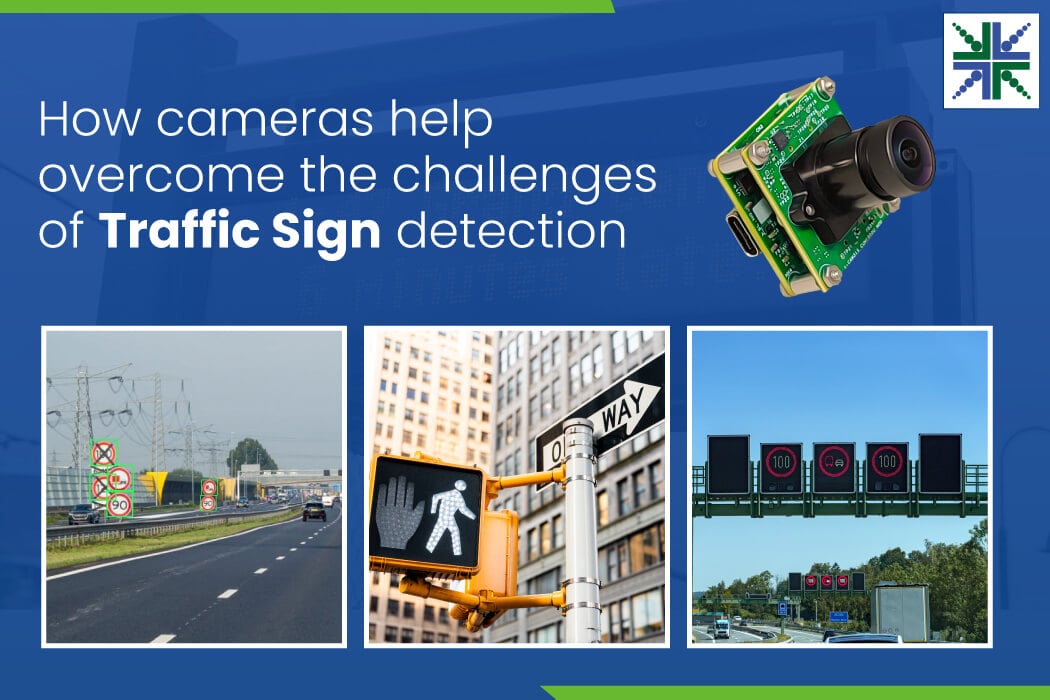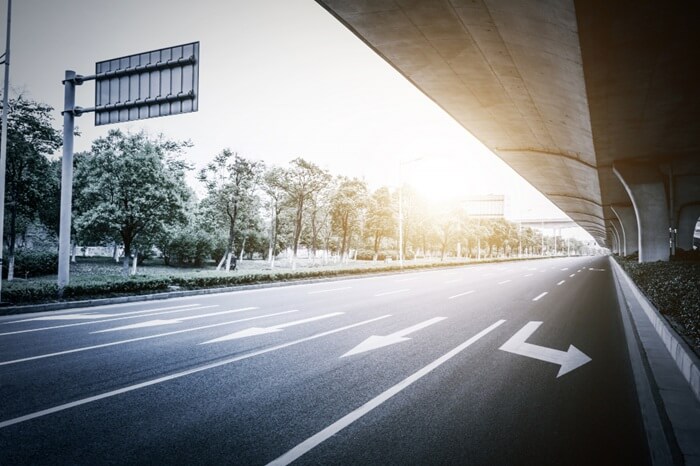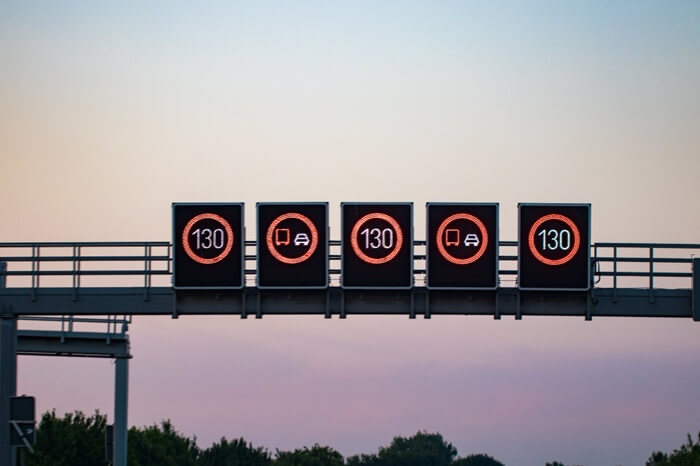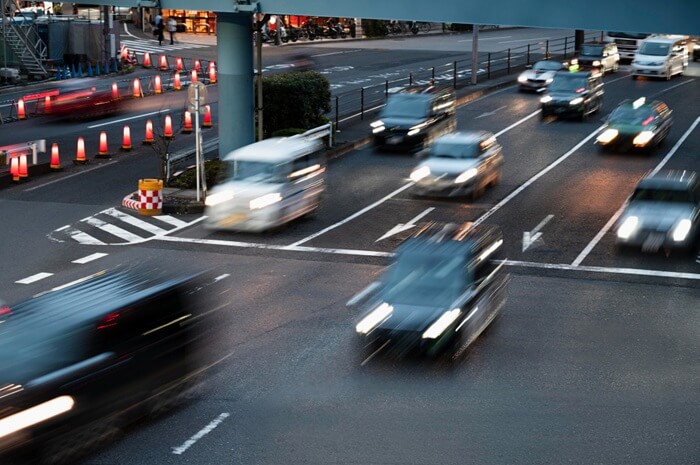What you will learn:
- High dynamic range and LED flicker mitigation help recognize signage under variable lighting
- Motion blur and low-light noise reduce recognition accuracy, which is addressed by fast shutter speeds, noise reduction, and global shutter mode
Urban roads are more unpredictable than ever due to temporary signs, fast-changing intersections, worn-out markings, and varying traffic light systems, all complicate real-time monitoring. Embedded vision systems are under pressure to detect static signage with accuracy.
These systems rely on traffic cameras to interpret visual data like symbols, text, light states, and color changes. So, vehicles and monitoring platforms can respond to the environment as intended.
In this blog, you’ll learn about how modern traffic cameras handle the challenges of detecting traffic signs, and how the right imaging features can improve accuracy across conditions.
Importance of Cameras in Traffic Sign Detection
Camera modules capture key visual cues such as color, shape, contrast, size, and orientation, as seen by human drivers. This input powers machine vision algorithms that detect, classify, and localize signage.
Since signs vary by region, age, and environment, high-quality imaging ensures models can recognize both standard and distorted versions. Cameras also help:
- Read symbols and text
- Operate reliably in real-world driving conditions
- Handle country-specific formats and temporary signage
Camera-Based Challenges in Traffic Sign Detection
Lighting variations (with uneven illumination)
Urban and highway environments frequently subject traffic signs to highly variable lighting. Direct sunlight, shadows from nearby structures, reflections from wet surfaces, or glare from oncoming headlights can obscure important visual information.
LED-based flickering in digital signs
Temporary road signs and Variable Message Signs (VMS) often use high-frequency LED displays that pulse rapidly. Without proper camera settings, this can cause flickering, striping, or incomplete text in captured frames, making it difficult to extract reliable information.
Motion blur
Vehicles in motion generate scene changes within milliseconds. When signs are approached quickly (especially on highways), motion blur becomes a major problem. It reduces symbol clarity, edges lose sharpness, and recognition models face difficulty isolating content.
Low-light noise
During night-time or in poorly lit zones, image sensors must capture usable data. However, this amplification also increases random noise. It ends up delivering grainy or distorted images where symbols and borders may be lost in visual clutter.
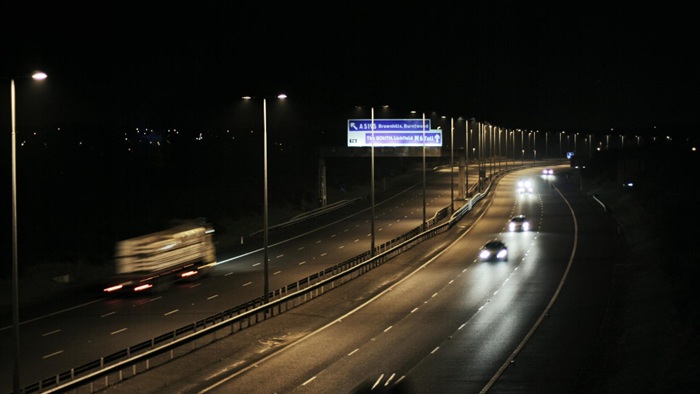
Color Distortion
Inconsistent lighting conditions, sign aging, and environmental exposure can significantly impact how traffic signs appear to a camera. These changes often lead to inaccurate color capture, where critical distinctions—such as red appearing dull or whites turning grey—are lost in the imaging pipeline. Without precise color fidelity, recognition algorithms may misclassify signs.
Key Camera Features That Help Overcome These Challenges
High resolution
Capturing high-definition imaging ensures traffic lights and vehicle actions are recorded correctly, even from a distance. High resolution also enables zoomed-in image analysis without loss of detail. Therefore, it becomes convenient for traffic systems to monitor large intersections and enforce violations accurately.
High Dynamic Range (HDR)
HDR resolves wide variations in brightness by capturing multiple exposures within the same frame and combining them into a single output. The balanced image retains detail across both overexposed and underexposed regions, making signs visible even when placed at shadowed intersections or sunlit curves. HDR algorithms also support tonal mapping that adjusts local contrast while preserving symbol legibility.
LED Flicker Mitigation (LFM)
LFM synchronizes image acquisition with the modulation frequency of LED signs and eliminates issues caused by unsynchronized exposures. It integrates timing control within the sensor’s rolling or global shutter cycle, capturing the sign during its peak illumination phase. Hence, temporal inconsistencies from variable LED duty cycles are neutralized.
Fast shutter speed
Cameras reduce the likelihood of blur during rapid movement by adopting fast shutter speeds and optimized exposure intervals. It keeps sign contours sharp even during lane changes, high-speed turns, or when vehicles rapidly approach signage at tight angles. High-speed imaging also supports frame acquisition within milliseconds.
Noise reduction
Advanced denoising algorithms analyze sensor output in low-light conditions and remove random pixel-level variations. This helps preserve edges and maintain symbol legibility in low-light environments such as rural roads, tunnels, or early mornings. The algorithms operate in spatial and temporal domains to distinguish real features.
ISP tuning
ISP pipelines correct color shifts, enhance saturation, and maintain consistent contrast between symbols and backgrounds. Such calibrated outputs help detection software interpret colors correctly across different weather and lighting conditions. ISPs also manage tonal consistency, reducing the visual drift that may confuse temporal tracking systems.
e-con Systems’ Cameras for Traffic Sign Detection
Since 2003, e-con Systems has been designing, developing, and manufacturing OEM cameras. Our camera experts can help find and deploy the right imaging solution for your traffic sign or signal systems.
Use our Camera Selector to see our full portfolio.
Check out all our traffic management cameras.
If you need help finding the traffic monitoring camera for your embedded vision system, write to camerasolutions@e-consystems.com.

Dilip Kumar is a computer vision solutions architect having more than 8 years of experience in camera solutions development & edge computing. He has spearheaded research & development of computer vision & AI products for the currently nascent edge AI industry. He has been at the forefront of building multiple vision based products using embedded SoCs for industrial use cases such as Autonomous Mobile Robots, AI based video analytics systems, Drone based inspection & surveillance systems.




